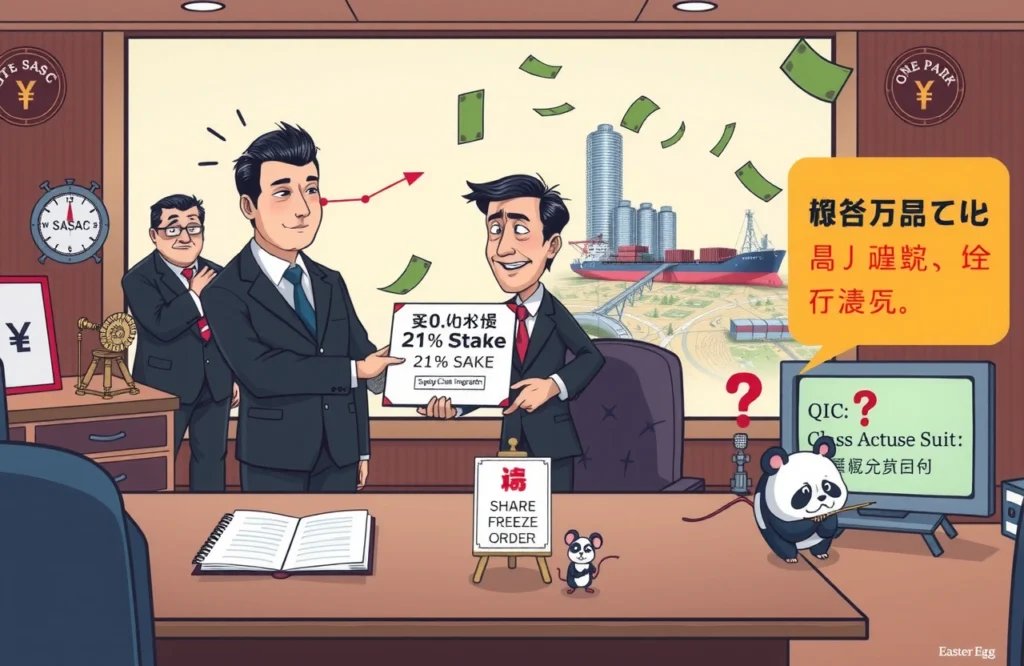– Shenzhen banks including ICBC and Bank of China publicly denounced loan intermediary Xinxin Huilin for fraudulent advertising practices
– Investigations reveal Xinxin Huilin continued ‘debt-swap’ services despite claims of compliance with regulations
– Banks warn consumers against ‘interest reduction’ schemes and false claims of banking partnerships
– Detailed analysis of intermediary fee structures and regulatory responses by Shenzhen authorities
Financial institutions across Shenzhen have mobilized in unprecedented unity, issuing stark warnings about the proliferation of illegal loan intermediaries operating within China’s fintech hub. This coordinated industry response comes as banks including ICBC (Industrial and Commercial Bank of China, 中国工商银行), China Bank (中国银行), and CITIC Bank discovered widespread misrepresentation schemes where intermediaries falsely claimed banking partnerships to lure customers into deceptive debt-restructuring programs. The emerging scandal spotlights predatory tactics targeting financially vulnerable consumers through promises of ‘credit limit boosts’, ‘interest rate reductions’, and ‘credit report repairs’ – highlighting systemic vulnerabilities in China’s rapidly evolving lending ecosystem.
Shenzhen Banks Issue Collective Statements
Shenzhen Rural Commercial Bank launched the first volley on July 16, exposing Xinxin Huilin Consulting Services Co., Ltd. (鑫心惠邻(深圳)咨询服务有限公司) and its nine affiliated companies for falsely claiming banking partnerships. ‘We have never established cooperative relations with any illegal intermediary institutions regarding loan business,’ the bank declared in its public notice. Within 24 hours, major financial institutions joined the chorus – including Bank of Communications, China Merchants Bank, and Ping An Bank – confirming they had no authorized partnerships with the intermediary firm.
December 2023 data reveals Shenzhen hosts over 3,000 licensed financial intermediaries, but regulators estimate nearly 40% operate in regulatory gray zones. ICBC Shenzhen Branch detailed how intermediaries deployed localized marketing tactics: ‘Loan intermediaries placed advertising in nearby communities’ elevators and public accounts, displaying slogans such as “interest rate optimization” and “collaboration with XX bank”.’ Industry analysis confirms this geographic targeting focuses on affluent Shenzhen districts where property values support large-scale mortgage refinancing schemes.
Crucial Consumer Protections
Financial institutions emphasized these critical safeguards:
– Banks never collect intermediary fees, handling charges, or bridge financing costs
– Official loan channels include bank branches, mobile banking apps, and verified online portals
– Verification protocols require bank hotline confirmation before accepting partnership claims
Unmasking Xinxin Huilin Operations
Founded in November 2023, Xinxin Huilin Consulting Services operates with registered capital of ¥10 million under legal representative Gui Yaolin (桂耀林). Corporate filings verify the company offers ‘financing consulting services’ and ‘debt optimization solutions’ through 17 affiliated entities. Market investigators discovered their marketing promised ‘annual mortgage rates reduced to 2.35%’ through conversion services transforming residential loans into business loans – a regulatory loophole that attracted premium fees averaging 15-20% of accrued savings.
Deceptive Marketing Tactics
Researchers documented consistent misrepresentation patterns:
– Forged bank logos in promotional materials
– Counterfeit ‘cooperation agreements’ with financial institutions
– Commission-driven agents impersonating bank representatives
– Non-disclosure of third-party fees through multi-layered service contracts
Customer testimonials obtained reveal intermediaries systematically outperformed banks facilitating loans for underqualified applicants – a practice firms accomplish through fabricated financial documents and collateral inflation. Legal specialists confirm these constitute criminal fraud under China’s Banking Regulations.
Regulatory Crackdown Escalates
The State Financial Regulatory Administration’s Shenzhen Bureau issued formal alerts about illegal lending intermediaries in Q1 2024, citing epidemic-level consumer complaints:
– 32% deception involving interest rate promises
– 28% undisclosed fee charges
– 25% unauthorized information sharing
– 15% AB loan scams
Beijing Dacheng Law Firm partner Pei Hongbo outlines three-tiered penalties: ‘Intermediaries face administrative sanctions including license revocation, customers face loan recalls plus penalty interest, while banks risk capital adequacy impacts through default accumulation.’ Shenzhen enforcement protocols prioritize rapid identification of suspicious refinancing patterns through AI verification systems linking property registries with bank transfers.
Banking Security Measures
Compliance specialists confirm enhanced authentication protocols:
– Dual-channel approval for loan conversions
– Blockchain verification of revenue documentation
– Third-party institution confirmation for bridge financing
– Twenty-four hour application review windows
Industry-Wide Ramifications
This coordinated Shenzhen banking response marks seismic policy shifts with national implications. Statistical models from the Chinese Academy of Financial Research indicate intermediaries falsely claiming bank affiliations comprises approximately ¥850 billion in outstanding loans nationwide. Corporate finance strategist Liang Qitong sees normalization potential: ‘This establishes the blueprint for coordinated regional banking action against intermediary malpractice – combining public alerts, identity verification requirements, and expedited closing mechanisms for fabricated applications.’
Strategic Implications for Consumers
Financial literacy advocates recommend:
– Formal credit report review before debt restructuring
– Written bank confirmation of purported partnerships
– Independent legal consultation for service contracts
– Regulatory hotline reporting through SFRA portals
The Shenzhen Banking Association announced July 18 a permanent liaison office specifically addressing intermediary fraud complaints, with resolutions prioritized within seven business days. China Banking and Insurance Regulatory Committee membership data confirms seventeen additional institutions will join the verification platform by mid-August.
While Xinxin Huilin publicly announced operational reforms, ground investigations verified loan restructuring consultations continued through disguised consulting arrangements. Banking leaders emphasize vigilance acceleration: analyzing fee structures, confirming official partnerships, and systematic reporting enables consumer protection against predatory loan intermediaries seeking profit from misrepresentation.
Concrete preventative actions include signing up for bank fraud alert services and verifying lender credentials through CBIRC online verification portals before engaging financing programs. This collaborative financial ecosystem defense strategy demonstrates Shenzhen’s pioneering approach to combating lending fraud through institutional unity and regulatory sophistication.




